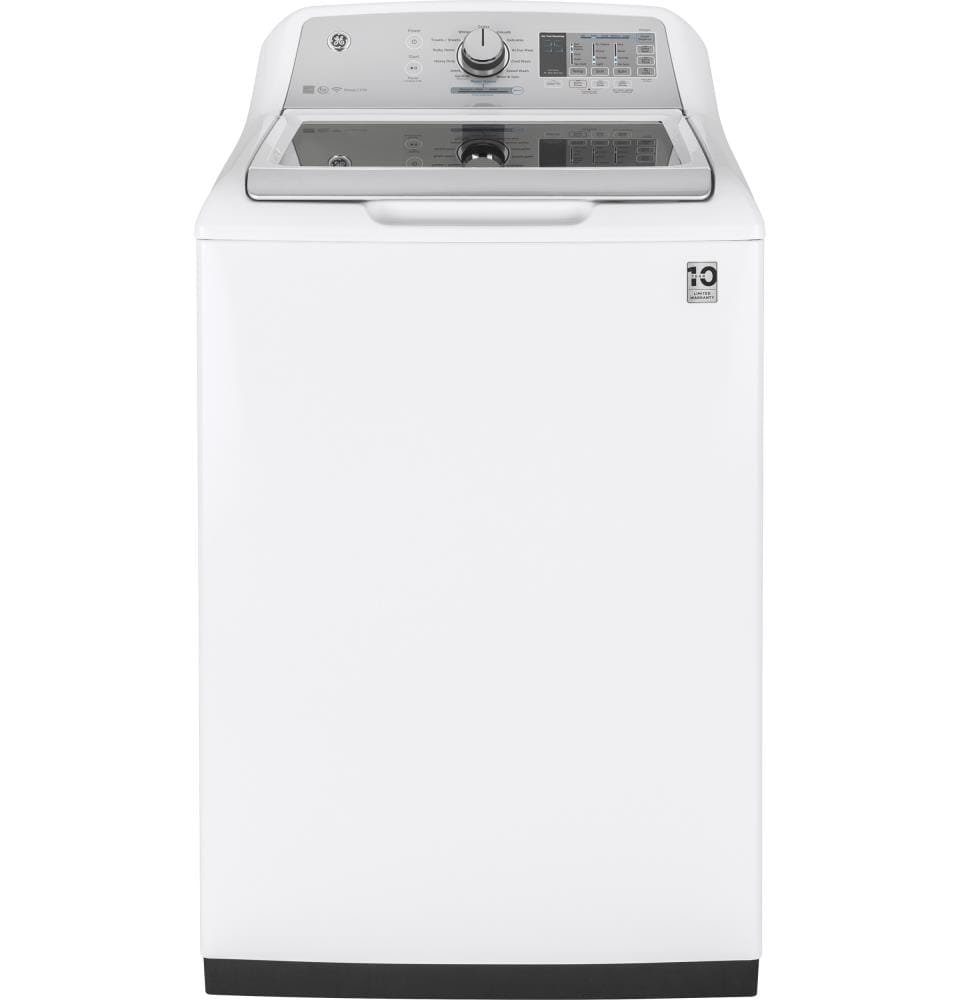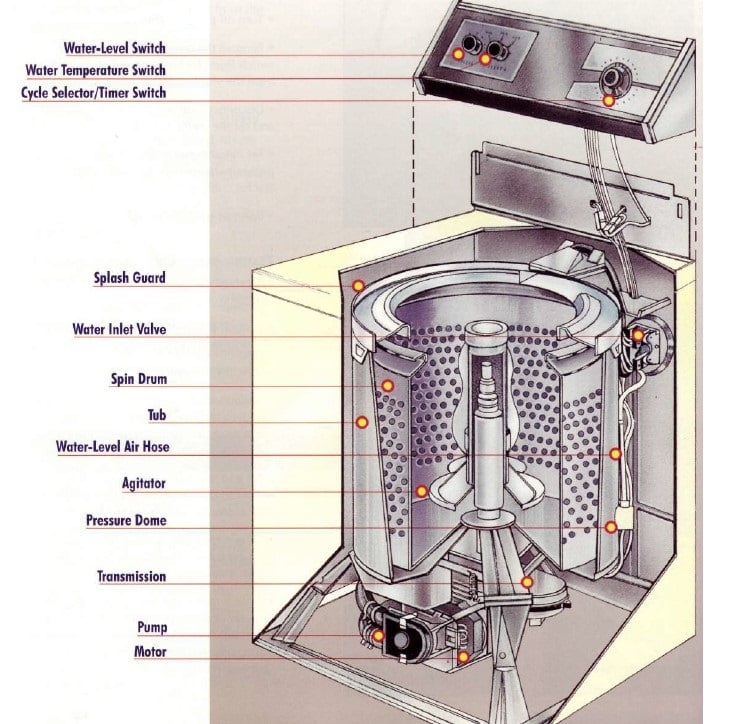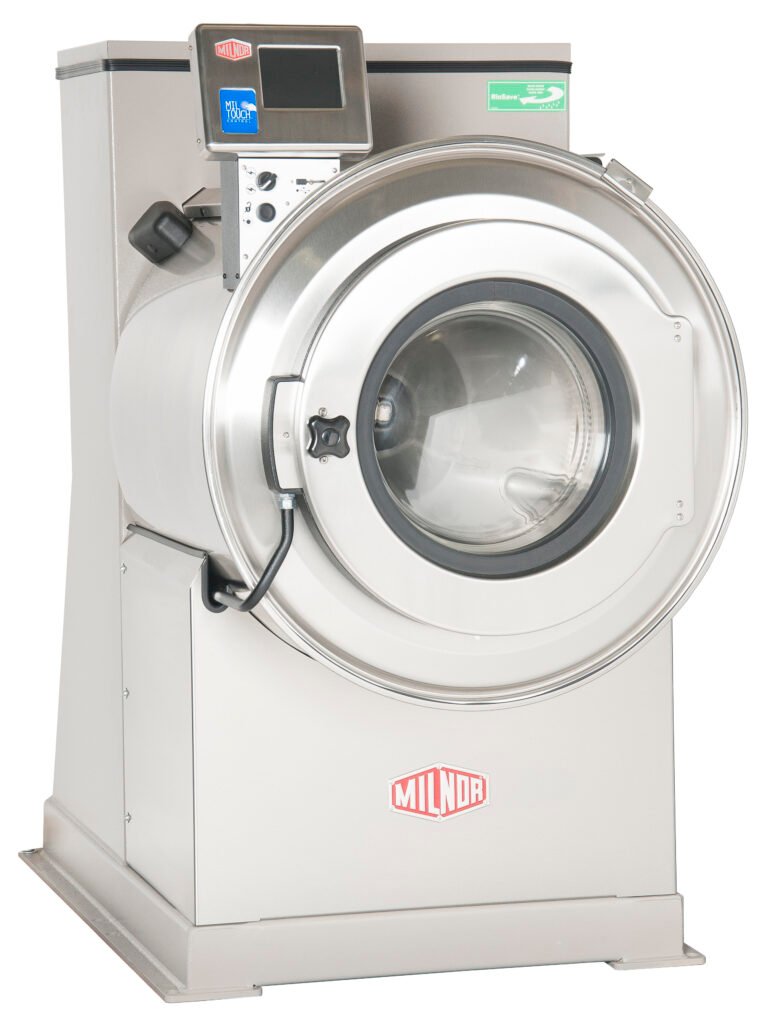
GE top load washer with agitator troubleshooting involves checking for common issues such as a clogged drain hose, unbalanced load, or broken agitator. Regular maintenance and proper usage can help prevent these problems and ensure optimal performance.

Credit: m.youtube.com
Common Issues With Ge Top Load Washer With Agitator
Having trouble with your GE top load washer with agitator? Don’t worry, you’re not alone. These machines are known for their excellent performance, but like any appliance, they can sometimes run into issues. In this section, we will discuss the most common problems you may encounter with your GE top load washer and offer some troubleshooting tips to get it back up and running smoothly.
1. Washer Not Spinning
If your GE top load washer is not spinning, it can be frustrating to deal with. There are a few possible reasons for this issue:
- The load is unbalanced: Ensure that you’re not overloading the washer with too many clothes or distributing the clothes unevenly in the drum. An unbalanced load can prevent the washer from spinning properly.
- The lid switch is faulty: Check if the lid is securely closed and if the lid switch is working correctly. A faulty lid switch can prevent the washer from spinning.
- The drive belt is worn out: Inspect the drive belt for any signs of wear and tear. If the belt is damaged or stretched, it may need to be replaced.
Troubleshooting these issues should help get your washer spinning again.
2. Agitator Not Working
If the agitator in your GE top load washer is not working, it can impact the cleaning performance of your machine. Here are some possible reasons for this problem:
- The agitator dogs are worn out: The agitator dogs are small plastic pieces that help the agitator move. Over time, these dogs can wear out and need to be replaced.
- The agitator belt is loose or broken: Check the agitator belt for any signs of damage or loosening. If the belt is damaged, it may need to be replaced.
- The drive block is worn: The drive block connects the agitator to the drive shaft. If it is worn out, the agitator may not move properly.
By identifying and addressing these issues, you can restore the proper functioning of your agitator and improve your washer’s cleaning performance.
3. Leaking Water
Leaking water from your GE top load washer can be a major concern. Here are some possible causes of water leakage:
- Loose or damaged hoses: Inspect all the hoses connected to your washer and tighten any loose connections. Also, check for any cracks or damage in the hoses, as they may need to be replaced.
- Worn out or faulty water inlet valve: The water inlet valve controls the flow of water into the washer. If it is worn out or faulty, it can cause water to leak. Consider replacing the valve if necessary.
- Clogged drain pump or filter: A clogged drain pump or filter can result in water overflowing and leaking. Clean or unclog the drain pump and filter to resolve this issue.
By addressing these potential causes of water leakage, you can prevent further damage and maintain the efficiency of your GE top load washer.
Troubleshooting Steps
If you’re experiencing issues with your GE top load washer with agitator, don’t worry – we’ve got you covered. Troubleshooting common problems can help you identify the root cause and potentially fix them without the need for professional help. In this section, we’ll walk you through the troubleshooting steps for three common issues: washer not spinning, agitator not working, and leaking water. Follow these steps to get your washer back up and running smoothly.
1. Washer Not Spinning
If your GE top load washer is not spinning, there are a few potential causes you can investigate:
- Check if the washer is properly leveled. Use a level tool to ensure it is balanced on all sides.
- Make sure the lid is securely closed. Some GE washers have a safety feature that prevents spinning when the lid is open.
- Check the load size. Overloading the washer can cause it to stop spinning. Remove any excess items and try again.
- Inspect the drive belt. A worn or broken drive belt can prevent the washer from spinning. If you notice any damage, consider replacing it.
- Lastly, verify that the washer’s motor is functioning correctly. If you suspect a motor issue, it’s best to contact a professional for assistance.
2. Agitator Not Working
If the agitator in your GE top load washer is not working, follow these troubleshooting steps:
- Check if the agitator is properly attached to the drive shaft. Sometimes, it may become loose or disconnected during heavy loads.
- Inspect the agitator components for any signs of damage or wear. If the agitator dogs or fins are broken, they may need to be replaced.
- Try manually turning the agitator to see if it moves freely. If it’s stuck or difficult to rotate, there may be an obstruction or a mechanical issue that requires further investigation.
- Ensure that the control settings are selected correctly. Some wash cycles may not activate the agitator, depending on the program.
- If you’ve exhausted all troubleshooting options without success, it’s advisable to consult a professional technician for assistance.
3. Leaking Water
If you’re dealing with a leaking GE top load washer, try these troubleshooting steps to identify and resolve the issue:
- Inspect the water inlet hoses. Check for any cracks, splits, or loose connections. Tighten the connections or replace the hoses if necessary.
- Check the drain hose for any kinks or clogs. Ensure that it is properly connected and positioned to facilitate the drainage of water.
- Inspect the tub and door seals for signs of damage or wear. If they are compromised, they may need to be replaced to prevent water leakage.
- Examine the detergent dispenser and detergent drawer for any debris or blockages that could cause water to overflow. Clean them thoroughly if needed.
- If the issue persists or you’re unable to identify the source of the leak, it’s best to consult a qualified technician for further assistance.
By following these troubleshooting steps, you can potentially resolve common issues with your GE top load washer with agitator. Remember, if you’re unsure or unable to fix the problem yourself, it’s always recommended to seek professional help to ensure a proper and safe resolution.
Preventive Maintenance And Tips
Proper maintenance and care are essential to keep your GE Top Load Washer with Agitator running smoothly and efficiently. By following these preventive maintenance tips, you can extend the lifespan of your washer and avoid common troubleshooting issues.
1. Regular Cleaning
Regular cleaning is crucial to maintain the performance of your GE Top Load Washer with Agitator. Over time, detergent residue, dirt, and other debris can build up in the machine, leading to foul odors and reduced washing efficiency. To prevent this, make sure to clean the washer regularly by following these steps:
- Wipe down the interior and exterior surfaces of the machine using a damp cloth and mild detergent.
- Remove and clean the agitator and other removable parts according to the manufacturer’s instructions.
- Inspect and clean the detergent dispenser and filter.
- Run a regular cleaning cycle using a washing machine cleaner or a mixture of vinegar and baking soda to remove any built-up residue.
2. Proper Loading
Proper loading of the washer is crucial to prevent issues such as unbalanced loads, excessive vibrations, and inefficient washing. Follow these loading tips to ensure optimal performance:
- Do not overload the washer. Follow the manufacturer’s guidelines for the maximum load capacity.
- Distribute the clothes evenly in the drum to maintain balance during the wash cycle.
- Avoid washing large items or heavy fabrics, such as rugs or blankets, as they can cause imbalance and strain on the agitator.
3. Checking Water Supply
The proper water supply is essential for the optimal functioning of your GE Top Load Washer with Agitator. Follow these steps to ensure that the water supply is sufficient:
- Check the water connections to ensure they are securely attached and free from leaks.
- Verify that the water supply valves are fully open.
- Ensure that the water pressure is within the recommended range specified in the user manual.
- Inspect the water inlet filters for any clogs or blockages and clean them if necessary.

Credit: careandrepairs.ca

Credit: www.youtube.com
Frequently Asked Questions Of Ge Top Load Washer With Agitator Troubleshooting
How Do I Troubleshoot My Ge Top Load Washer With Agitator?
To troubleshoot your GE top load washer with agitator, start by checking if the power supply is connected properly. Ensure that the water supply is on and the hoses are not kinked. Also, make sure the load is balanced and the lid is closed securely.
If the issue persists, consult the washer’s user manual or contact GE customer support for further assistance.
Why Is My Ge Top Load Washer Not Agitating?
If your GE top load washer is not agitating, it could be due to various reasons. Check to see if the agitator is properly installed and not worn out. Ensure the lid switch is functioning correctly, as a faulty switch can prevent agitation.
Additionally, inspect the drive belt and motor to ensure they are working properly. If the problem persists, contact GE customer support for further assistance.
How Do I Fix A Ge Top Load Washer That Won’t Spin?
If your GE top load washer won’t spin, there are a few troubleshooting steps you can take. Start by ensuring that the load is evenly distributed and not overloaded. Check if the lid switch is working properly, as a faulty switch can prevent spinning.
Clean the drain pump filter and check for any clogs. If the issue persists, consult the washer’s user manual or contact GE customer support for further assistance.
Why Is My Ge Top Load Washer Making Noise During The Spin Cycle?
If your GE top load washer is making noise during the spin cycle, it could be due to several factors. Check if the load is unbalanced or if there are any loose items in the tub. Inspect the drive belt and motor for any issues.
Additionally, make sure the washer is level and not vibrating excessively. If the noise continues, consult the washer’s user manual or contact GE customer support for further assistance.
Conclusion
Troubleshooting your GE top load washer with agitator doesn’t have to be a daunting task. By following the steps outlined in this blog post, you can effectively identify and resolve common issues such as excessive noise, leaking, or improper spinning.
Remember to consult the user manual for specific instructions and reach out to GE customer support if needed. Keeping your washer functioning properly will ensure efficient laundry cycles and prolong the lifespan of your appliance.






